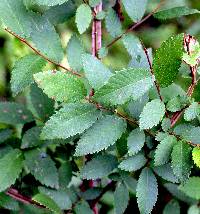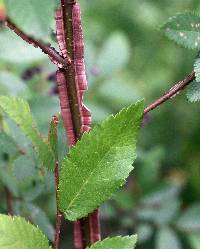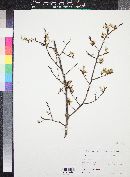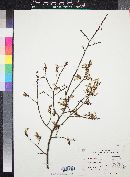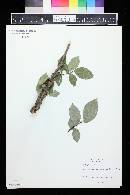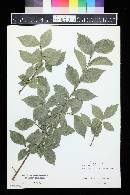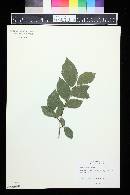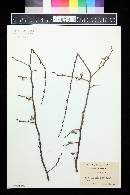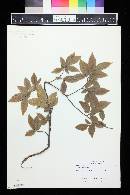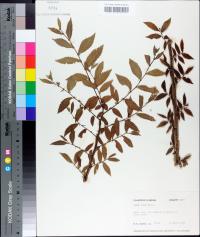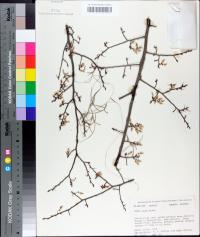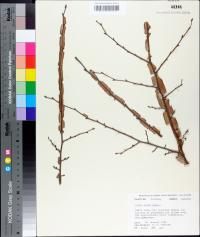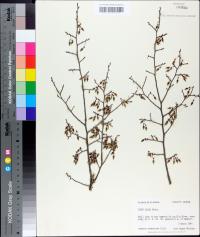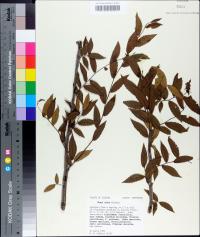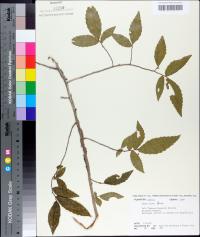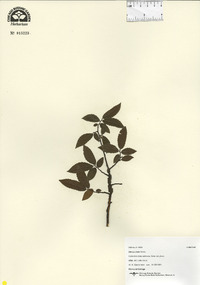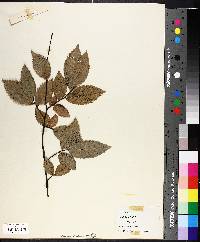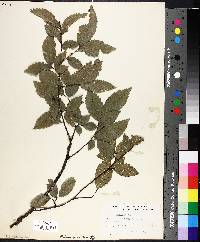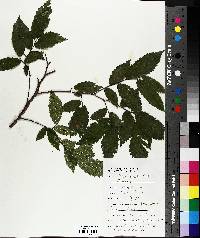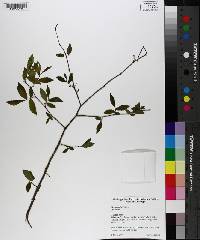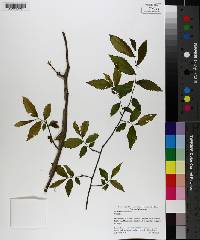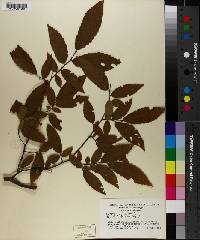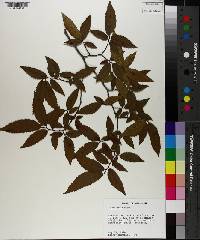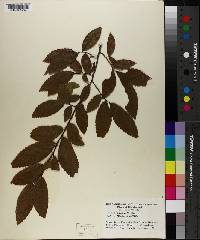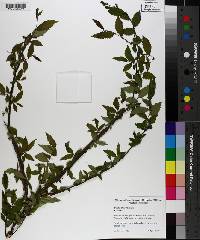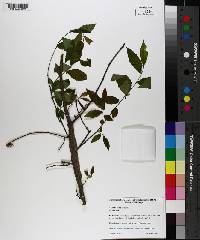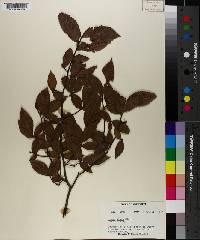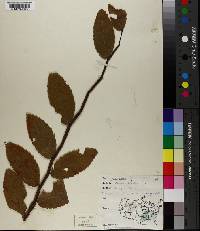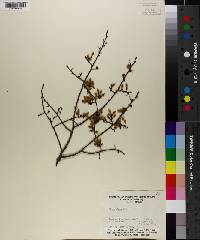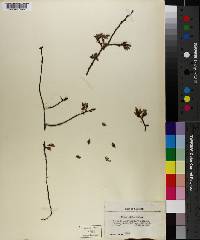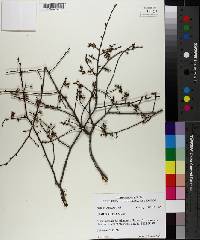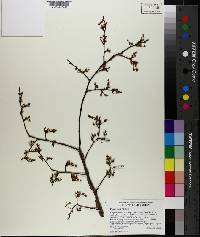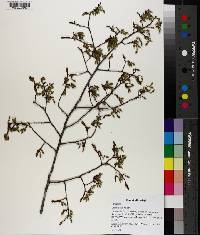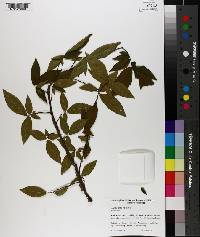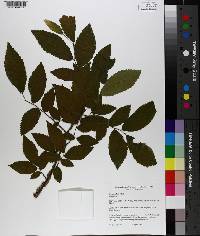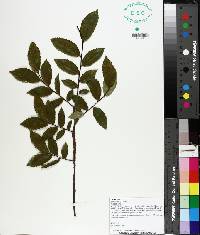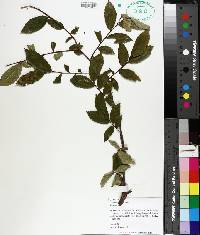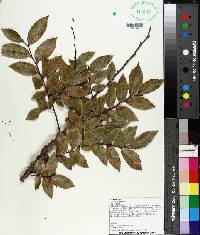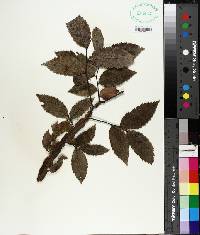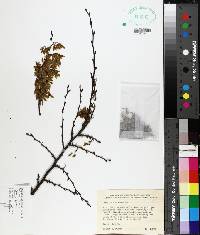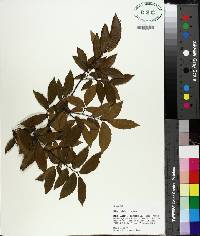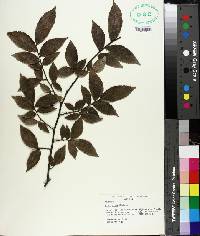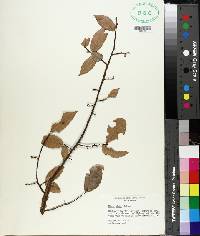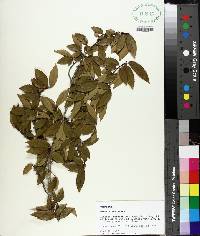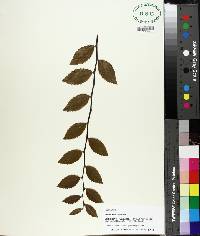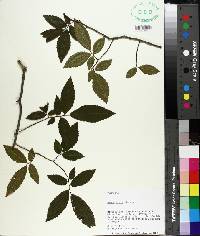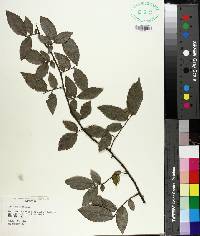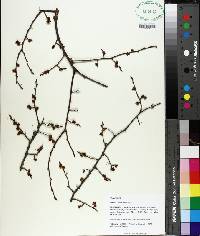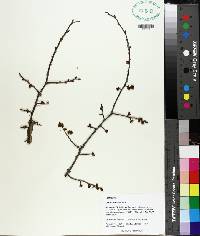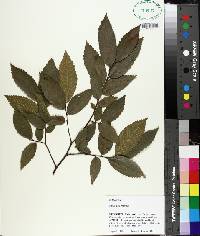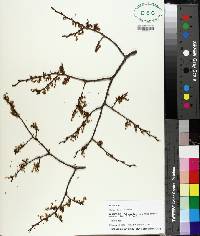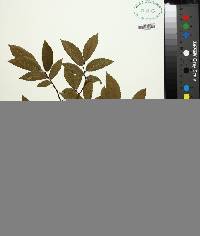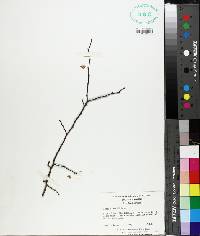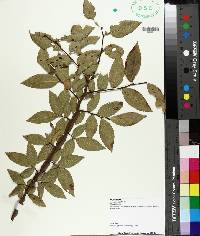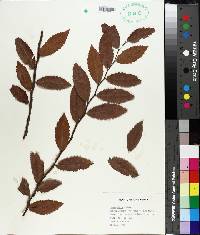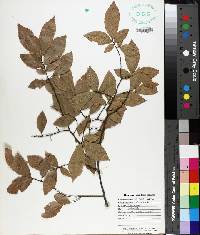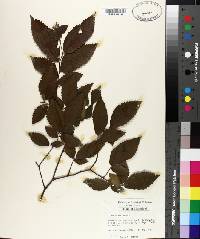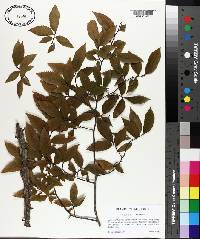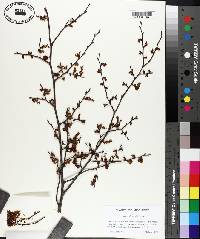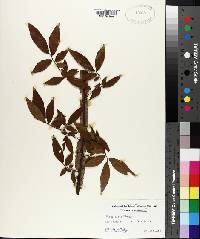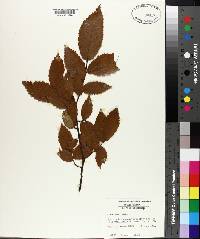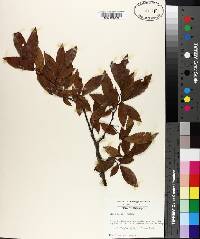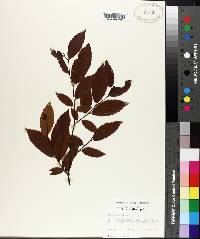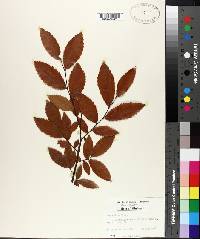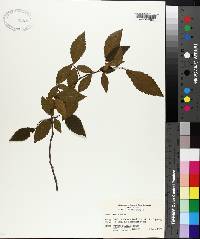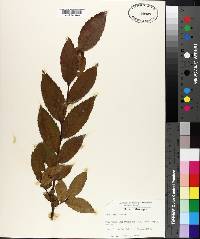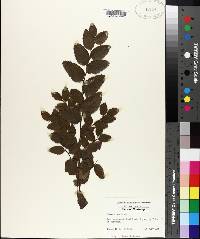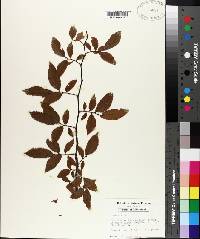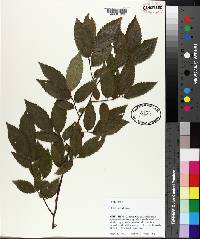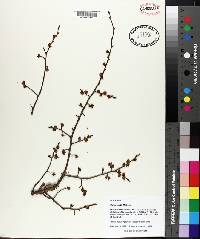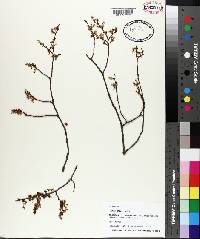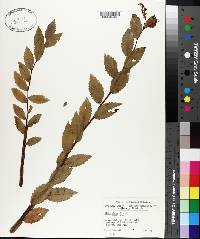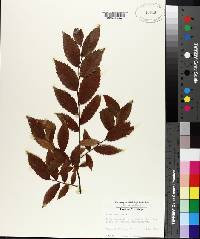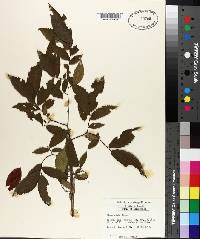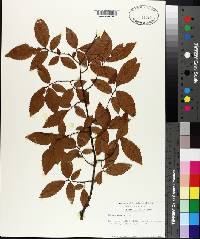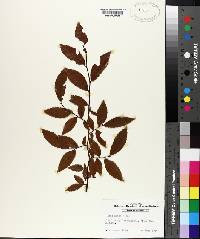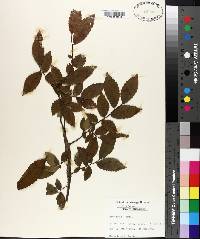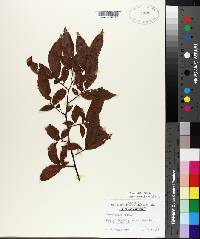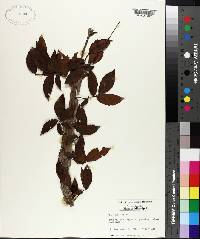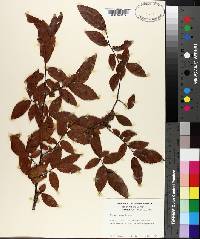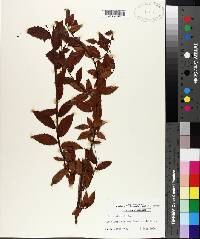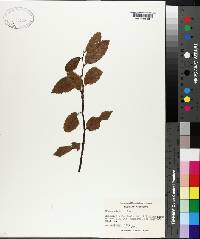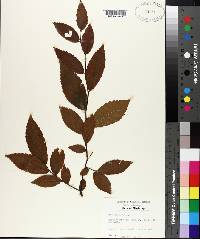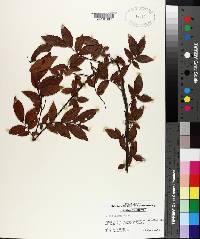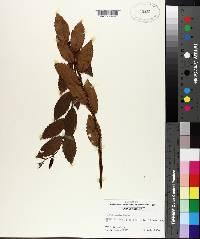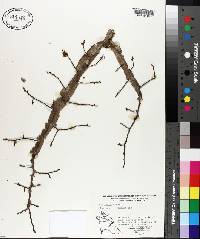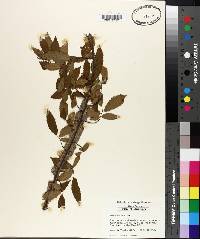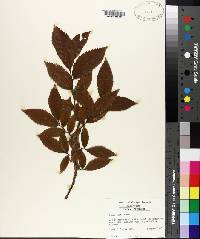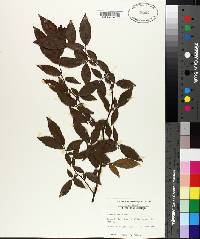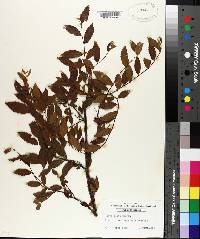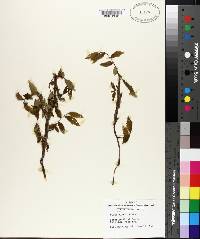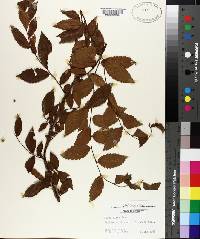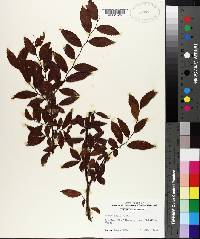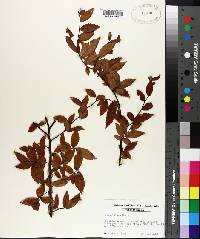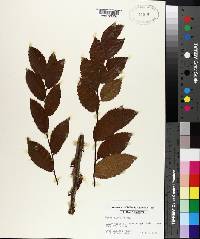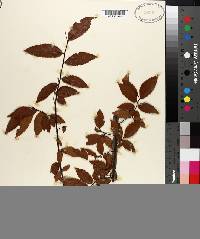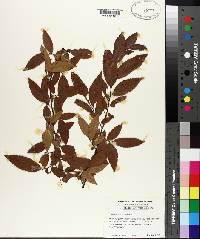Ulmus alata
|
|
|
|
Family: Ulmaceae
Winged Elm
|
Trees , 10-18 m; crowns open. Bark light brown to gray with shallow ridges and plates. Wood hard. Branches: young and old-growth branches with opposite, prominent, regular corky wings; twigs reddish brown, pubescent to glabrous. Buds: apex acute; scales brown to rusty, slightly pubescent. Leaves: petiole ca. 2.5 mm, pubescent. Leaf blade lanceolate to oblanceolate, 3-6.9 × 0.6-3.2 cm, base somewhat cordate to oblique, margins doubly serrate, apex acute; surfaces abaxially with trichomes on veins, tufts of pubescence in axils of veins, adaxially glabrous to scabrous. Inflorescences short racemes, not pendulous, less than 2.5 cm; pedicel 2-7 mm, not fully expanded until fruiting stage. Flowers: calyx deeply lobed, symmetric, lobes 5; stamens 5; anthers red. Samaras gray-tan, often reddish tinged, lanceolate to oblong-elliptic, ca. 8 mm, narrowly winged, margins ciliate, cilia white, 1-2 mm. Seeds slightly thickened, not inflated. 2 n = 28. Flowering late winter-early spring. Alluvial woods and deciduous woodlands, especially dry, acidic woodlands and glades, along fencerows, waste areas; planted as street trees; 0-600 m; Ala., Ark., Fla., Ga., Ill., Ind., Kans., Ky., La., Miss., Mo., N.C., Ohio, Okla., S.C., Tenn., Tex., Va. Often planted as a shade tree in the southern United States, Ulmus alata is also cultivated outside North America. The name Ulmus pumila was incorrectly applied to this species by Walter in 1788.
Tree to 15 m, the thinly hairy twigs commonly developing 2 opposite plates of cork, beginning the first or second season; buds glabrous or finely pubescent; lvs oblong or somewhat obovate, mostly 4-7 cm, less than half as wide, scarcely cordate at base, glabrous to scabrellous above; fls in short racemes seldom 1 cm; fr narrowly ovate, 1 cm incl. the 2 mm stipe, ciliate, pubescent on the sides; 2n=28. Moist or dry uplands; se. Va. to s. Ind., s. Ill., and Mo., s. to Fla. and Tex. Gleason, Henry A. & Cronquist, Arthur J. 1991. Manual of vascular plants of northeastern United States and adjacent Canada. lxxv + 910 pp. ©The New York Botanical Garden. All rights reserved. Used by permission. From Flora of Indiana (1940) by Charles C. Deam Probably restricted to the area shown on the map. This species has two rather distinct habitats. In the hilly counties it is found on the sides of cliffs, on steep rocky slopes, and on the crests of high ridges. It is usually found on or near sandstone and generally associated with American chestnut and black, chestnut, and scarlet oaks. In this habitat it is usually a scrubby or small tree with the corky excrescence on the branches well developed. The other habitat is in hard, white clay flats of the southwestern counties where it is associated mostly with sweet and black gum and pin oak. In the "flats" it sometimes reaches a large size. Rarely specimens are seen which have few or no corky excrescences. …… Indiana Coefficient of Conservatism: C = 7 Wetland Indicator Status: FACU |



